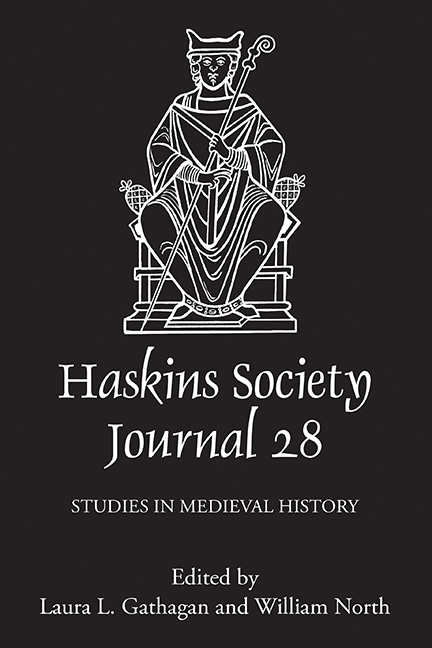Book contents
- Frontmatter
- Contents
- List of Figures and Tables
- Editors' Note
- Abbreviations
- 1 Under the ‘Romans’ or under the Franks? Venice between Two Empires
- 2 Lost and Found: Eadmer's De reliquiis sancti Audoeni as a Cross–Channel Solution to the Canterbury–York Dispute
- 3 Of Lost Libraries and Monastic Memories: Creating the Eleventh-Century Novalesa Miscellany
- 4 The Place of Henry I in English Legal History
- 5 ‘Goliath Thought David Rather Boastful’: Royal Masculinity in Kingless Societies
- 6 Well-Behaved Women? Agnès of Baudement and Agnès of Braine as Female Lords and Patrons of the Premonstratensian Order
- 7 ‘Videmus nunc per speculum’: The Mysticism and Naturalism of the Twelfth-Century imago mundi
- 8 The Norman Kings of Africa?
- 9 Punishing Adultery: Private Violence, Public Honor, Literature, and the Law
3 - Of Lost Libraries and Monastic Memories: Creating the Eleventh-Century Novalesa Miscellany
Published online by Cambridge University Press: 23 August 2019
- Frontmatter
- Contents
- List of Figures and Tables
- Editors' Note
- Abbreviations
- 1 Under the ‘Romans’ or under the Franks? Venice between Two Empires
- 2 Lost and Found: Eadmer's De reliquiis sancti Audoeni as a Cross–Channel Solution to the Canterbury–York Dispute
- 3 Of Lost Libraries and Monastic Memories: Creating the Eleventh-Century Novalesa Miscellany
- 4 The Place of Henry I in English Legal History
- 5 ‘Goliath Thought David Rather Boastful’: Royal Masculinity in Kingless Societies
- 6 Well-Behaved Women? Agnès of Baudement and Agnès of Braine as Female Lords and Patrons of the Premonstratensian Order
- 7 ‘Videmus nunc per speculum’: The Mysticism and Naturalism of the Twelfth-Century imago mundi
- 8 The Norman Kings of Africa?
- 9 Punishing Adultery: Private Violence, Public Honor, Literature, and the Law
Summary
The Novalesa Miscellany, a manuscript now housed at the Newberry Library in Chicago, has its genesis in two separate eleventh-century segments bound together long before it left the collection of the Monastery of Saint Peter in Novalesa in Italy's Piedmont region. The Miscellany is best known for its second section of sixteen folios containing the first two books of Paul the Deacon's Historia Langobardorum with elements interpolated specifically for the monastery and its history. The often overlooked first section, made up of 107 folios and written at some point earlier in the eleventh century, contains a number of tracts and texts on religious themes and hagiographic material collected specifically to serve the monastic community in Novalesa at an important time in its history. Its existence in Novalesa reflects the concerns of a monastery reclaiming its status after a period of abandonment and re-establishment, as well as the monastic networks which helped to provide it with suitable material for recapturing its legacy.
The first of Novalesa's concerns in the eleventh century was to recover its history. Originally founded in the eighth century by Abbo, a wealthy Frankish aristocrat with land holdings based in Provence, the monastery flourished subsequently and reached the height of its prosperity in the middle of the ninth century; however, the community was forced to abandon the site in the first decade of the tenth century on account of external threats. Although eventually re-established, the surviving community of monks had lost their original library and much of their institutional knowledge and history. The period of the eleventh century was therefore marked by attempts to regain both, processes that also led to the creation of the Novalesa Miscellany. With this background in mind, the purpose of this paper is threefold: to clarify the provenance of the content of the Novalesa Miscellany; to trace the origins of its unique so-called ‘glossary’ of Greek terms; and to reassess the purpose of the donations recorded on the final folio of the first section of the manuscript, as a means to understand the Miscellany's role as one of the many efforts in the eleventh century focused on the restoration of the abbey of Novalesa.
- Type
- Chapter
- Information
- The Haskins Society JournalStudies in Medieval History, pp. 39 - 62Publisher: Boydell & BrewerPrint publication year: 2017



